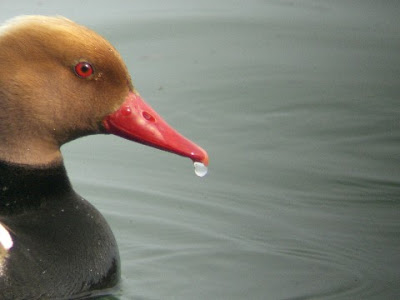The sight of a Golden Eagle soaring by is a majestic one.
Incredible.
Breathtaking.
 Coming in to spring, I have started to see more of these gorgeous eagles and I am not sure why exactly that is. So, with my curiosity piqued, and having access to some great academic reference libraries, I decided to try find out a little more about them.
Coming in to spring, I have started to see more of these gorgeous eagles and I am not sure why exactly that is. So, with my curiosity piqued, and having access to some great academic reference libraries, I decided to try find out a little more about them.The Golden Eagle (Aquila chrysaetos, Steinadler) has a fairly wide distribution through the Palaearctic and Nearctic (thanks wikipedia) and here in Central Europe, is associated with the high peaks and wilderness areas. As a youth, the Golden Eagle represented the awesomeness of nature: power, grace, freedom. And the Scottish Highlands. Of course, I have always wanted to see one: partly to see how they compared with the African eagles, but also for the more profound, spiritual connection I felt with them.
Okay, let me regale you with some cool things I managed to find out about Golden Eagles here in Europe: In northern Sweden, the distance between golden eagle nests was about the same for cliff and forest/tree nesting pairs, but still 100-170km apart! Wow! The author suggests that this nest spacing is more a factor of eagle spatial requirements
 than restrictions on the availability of nest sites (M Tjenberg 1985 Ibis 127/2). Now, the second statement kinda made sense to me, but 100-170km between nests! that is huge!
than restrictions on the availability of nest sites (M Tjenberg 1985 Ibis 127/2). Now, the second statement kinda made sense to me, but 100-170km between nests! that is huge!Well, I could understand this figure if the eagles were covering a large area, but in Spain, immature Golden Eagles (after juvenile dispersal) traveled an average of only 14km per day (range: 0.1 - 53.2 km) and only 2-6km per hour during peak activity (Soutullo, Urios & Ferrer 2006 Journal of Ornithology 147/1). This leads me to speculate that the Golden Eagles further South might not move as much as their Swedish counterparts and their nests might not be as widely dispersed. The same group of (Spanish) authors found that even young birds on juvenile dispersal moved only about 70 to 140km from the nest site (for males and females, respectively)(Soutullo, Urios, Ferrer & Peñarrubia 2006 Ibis 148/2). One female that was tracked from fledging, moved most in her first year (max 130km from nest, covering 16,000 km2, 95% of total range) and used only 40% of her total range in the remainder of the dispersal period (Urios, Soutullo, López-López, Cadahía, Limiñana & Ferrer 2007 Acta Ornithologica 42/2). She eventually settled in to a vacant territory just 26km from her natal site (Ibid).
 So, my speculation was not too far off. I have just found a paper on Golden Eagle habitat use in northern Italy, where the mean distance between nests was 8.7km (Pedrini & Sergio 2001 Bird Study 48). This links with Haller's (1982 Orn. Beob. 79) findings in the Swiss Alps where the mean foraging area was only 41.8km2 (roughly a circle of 3.6km)
So, my speculation was not too far off. I have just found a paper on Golden Eagle habitat use in northern Italy, where the mean distance between nests was 8.7km (Pedrini & Sergio 2001 Bird Study 48). This links with Haller's (1982 Orn. Beob. 79) findings in the Swiss Alps where the mean foraging area was only 41.8km2 (roughly a circle of 3.6km)It seems that the eagles tracked by Soutullo et al (2006) had their peak activity between 11am and 6pm. I suppose this is why we see them so often at these times as they circle the peaks and ridges. So, if you are out hiking in the mountains, the sun is high in the sky, and the thermals are rising, keep an eye to the skies as one of these beauties may just glide by!
Happy birding,
Dale Forbes
Dale Forbes
p.s. I took the photos through my binoculars from Eppzirler hut, between Scharnitz and Zirl - for almost the whole time that we were at the hut, the pair circled the peaks, showing off for us!
























.jpg)








.jpg)



